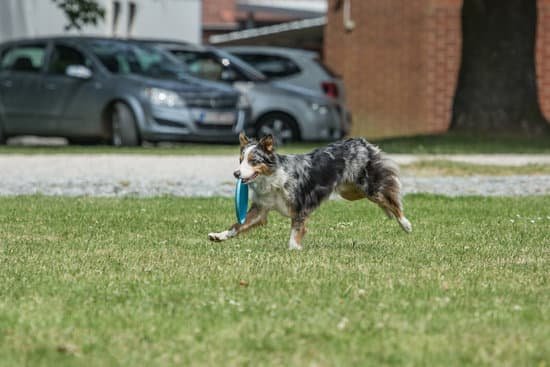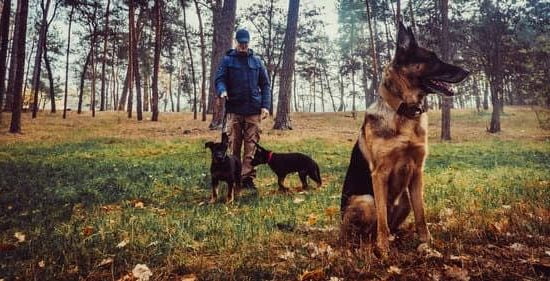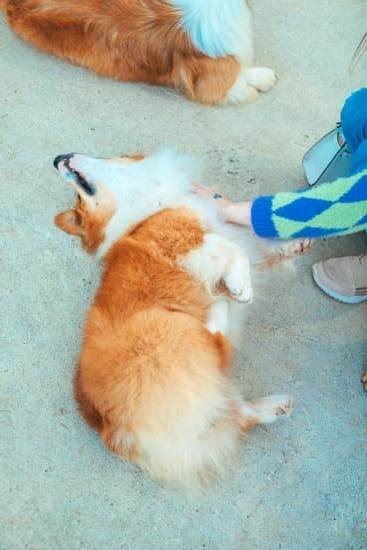Does your furry friend need a fun and exciting way to stay active? Agility dog training might be just the thing you’re looking for. From basic training techniques to advanced strategies, agility training offers numerous benefits for both dogs and their owners.
In this article, we’ll explore everything you need to know about agility dog training, including the essential equipment, safety tips, mental and physical health benefits, and real-life success stories from agility competitions. Whether you’re just getting started or looking to take your dog’s skills to the next level, this comprehensive guide has got you covered.
Agility dog training is a fantastic way to keep your canine companion mentally and physically stimulated while building a stronger bond with them. The combination of obedience and athleticism makes it an enjoyable activity for both you and your dog. As we delve deeper into this topic, we’ll also discuss how agility training can improve your dog’s overall well-being while providing real-life examples of successful agility dogs.
In addition to discussing the various aspects of agility dog training, we’ll provide insightful tips on choosing the right course for your dog’s specific needs, as well as how to get started with agility training. Whether you have a young pup eager to learn new tricks or an older dog in need of mental stimulation, this article will equip you with the information necessary to embark on an exciting journey of agility training with your faithful companion.
The Benefits of Agility Training for Dogs
Agility training for dogs offers a wide range of benefits for both the canine and their owner. The physical and mental stimulation provided by agility training can help improve a dog’s overall behavior, well-being, and bond with their human companion.
One of the key advantages of agility training is the opportunity it provides for dogs to exercise and burn off excess energy in a fun and challenging way. This can be particularly beneficial for breeds that are known to be high-energy or prone to boredom.
In addition to the physical benefits, agility training also helps to improve a dog’s mental acuity. The combination of learning commands, navigating obstacles, and following cues from their handler challenges a dog’s cognitive abilities, helping to keep them sharp and engaged. Furthermore, agility training has been shown to reduce behavioral issues in dogs by providing an outlet for their instinctual need to run, jump, and explore.
Furthermore, the bond between owner and pet is strengthened through agility training as they work together as a team. The communication required during agility training helps improve the trust and cooperation between a dog and its owner.
This positive reinforcement can carry over into everyday life, creating a more harmonious relationship between the two. As such, agility dog training not only has physical and mental benefits for the dogs but also enhances the overall quality of life for both the pet and its owner.
Essential Equipment for Agility Training
When it comes to agility dog training, having the right equipment is essential for success. Whether you are a beginner or an experienced trainer, the proper gear can make a significant difference in your dog’s performance. Here are some essential pieces of equipment you’ll need to get started with agility training:
- Agility Tunnel: A tunnel is a crucial component of any agility course and can help improve your dog’s speed and confidence as they navigate through it.
- Jumping Bar: The jumping bar is used to teach your dog to jump over obstacles at different heights, enhancing their flexibility and coordination skills.
- Weave Poles: Weave poles are essential for teaching your dog to weave in and out quickly, improving their overall agility and speed.
- A-Frame: An A-frame is used to train your dog to climb up and over an obstacle, helping them develop strength and balance.
In addition to these main pieces of equipment, other items such as pause tables, tires, and seesaws are also commonly used in agility courses. It’s important to invest in sturdy and well-made equipment that is safe for your dog to use during training.
As you prepare for agility dog training, consider setting up a designated area in your backyard or finding a local facility that offers agility courses. Having the right equipment readily available will not only enhance your dog’s performance but also provide them with the opportunity to enjoy a fun and challenging workout.
Basic Training Techniques for Agility
Agility dog training involves teaching your dog to navigate an obstacle course with speed and precision. Basic training techniques are essential in laying the foundation for more advanced agility skills. One of the key fundamental techniques is teaching your dog to follow basic commands such as sit, stay, come, and heel. These commands are crucial for controlling your dog during the agility course.
Another important basic training technique for agility is familiarizing your dog with various types of obstacles such as tunnels, weave poles, and jumps. It is essential to introduce each obstacle gradually and positively reinforce your dog’s successful interactions with them. This will help build their confidence and make them comfortable with the obstacles they will encounter in agility competitions.
In addition to basic command training and obstacle familiarization, it is important to focus on building a strong bond with your dog through positive reinforcement. Using treats, praise, and play as rewards for their progress during training sessions can create a positive association with agility training for your dog.
| Basic Training Techniques | Description |
|---|---|
| Basic command training | Teaching essential commands such as sit, stay, come, and heel. |
| Obstacle familiarization | Introducing various types of obstacles gradually and positively reinforcing successful interactions. |
| Positive reinforcement | Using treats, praise, and play as rewards to create a positive association with agility training. |
Advanced Training Techniques for Agility
Once your dog has mastered the basic agility training techniques, you can move on to more advanced exercises to challenge their skills and continue their development. Advanced agility training focuses on refining your dog’s techniques, improving their speed and accuracy, and preparing them for competition-level courses.
One of the key advanced training techniques for agility is incorporating more complex obstacle sequences into your training sessions. This can include combining different obstacles in quick succession, practicing tight turns and tricky maneuvers, and increasing the level of difficulty in navigating the course. By introducing these challenging sequences, you can help your dog become more agile, adaptable, and responsive to your commands.
In addition to increasing the complexity of obstacle sequences, advanced agility training also involves refining specific skills such as weaving through poles, perfecting contact zone performance on obstacles like A-frames and seesaws, and mastering distance handling techniques. These advanced skills are essential for tackling higher-level courses and ensuring that your dog is well-prepared for competitive agility events.
Furthermore, advanced agility training should also focus on improving your dog’s overall physical fitness, strength, and endurance. This can be achieved through targeted exercises such as strength training for hind-end awareness and power, balance exercises to improve stability on obstacles, and cardiovascular conditioning to boost endurance during runs.
| Advanced Training Techniques | Benefits |
|---|---|
| Incorporating complex obstacle sequences | Challenges skills and improves adaptability |
| Refining specific skills (weaving through poles, contact zones) | Prepares dogs for competitive events |
| Improving physical fitness and endurance | Enhances overall performance on the agility course |
Safety Tips for Agility Training
Proper Warm-Up and Cool Down
Before engaging in agility training, it is essential to ensure that your dog has undergone a proper warm-up session. Just like human athletes, dogs need to stretch their muscles and get their blood flowing before engaging in any physical activity. This can help prevent injuries and ensure that your dog is ready for the challenges of agility training. Additionally, a cool down period after the training session can also aid in preventing muscle soreness and injuries.
Use Proper Equipment
One of the most important safety tips for agility training is to use proper equipment. This includes ensuring that all obstacles are set up correctly and are safe for your dog to navigate.
It is important to regularly inspect the equipment for any signs of wear or damage, as this could pose a risk to your dog’s safety. Using high-quality and sturdy equipment specifically designed for agility training can help reduce the risk of accidents or injuries during training sessions.
Monitor Your Dog’s Physical Condition
During agility training, it is crucial to closely monitor your dog’s physical condition. Look out for any signs of fatigue, overexertion, or discomfort, and be prepared to adjust the intensity or duration of the training accordingly. It is also important to keep an eye on the weather conditions, as extreme heat or cold can impact your dog’s performance and pose a risk to their health. Always prioritize your dog’s well-being during agility training sessions.
By following these safety tips for agility training, you can help ensure that both you and your dog have a positive and safe experience while engaging in this exciting canine sport. Agility training can be incredibly rewarding for both you and your furry friend, but prioritizing safety is essential to enjoy its many benefits without any unnecessary risks.
Choosing the Right Agility Course for Your Dog
When it comes to agility dog training, choosing the right course for your dog is crucial to their success and enjoyment in the sport. There are several factors to consider when selecting an agility course that will best suit your canine companion’s needs and abilities.
Assessing Your Dog’s Skill Level
Before enrolling your dog in an agility course, it’s important to assess their current skill level. If your dog is new to agility training, look for a beginner-level course that focuses on introducing basic obstacles and commands. For more experienced dogs, a higher-level course with advanced challenges may be more appropriate.
Understanding the Training Methods
Different agility courses may follow different training methods and techniques. Some instructors may use positive reinforcement, while others may use a combination of rewards and corrections. It’s essential to understand the training approach of each course and choose one that aligns with your own training philosophy and your dog’s learning style.
Considering Your Dog’s Physical Limitations
Not all dogs are physically suited for every type of agility course. For example, large breeds or those with certain health conditions may struggle with courses that have high jumps or narrow tunnels. Take into consideration your dog’s size, age, and physical limitations when choosing an agility course to ensure their safety and well-being during training.
By carefully considering these factors, you can make an informed decision when choosing an agility course for your dog. Remember that every dog is unique, so finding the right fit will ultimately contribute to a positive and fulfilling experience for both you and your canine companion in the world of agility dog training.
The Mental and Physical Health Benefits of Agility Training
Agility dog training isn’t just a fun activity for your furry friend, it also offers a wide array of mental and physical health benefits. Here are some of the advantages that agility training can provide for your canine companion:
- Physical Exercise: Agility training involves running, jumping, weaving through poles, and navigating various obstacles. This provides an excellent cardiovascular workout for your dog, helping to keep them fit and healthy.
- Mental Stimulation: The mental challenges of learning and executing agility courses can help keep your dog’s mind sharp. It requires them to problem-solve, memorize sequences, and stay focused amidst distractions.
- Bonding: Participating in agility training with your dog can strengthen the bond between you. Working together as a team to overcome obstacles can build trust and communication between you and your pet.
In addition to these benefits, agility training can also have positive effects on your dog’s behavior. Dogs who participate in agility often exhibit improved confidence, impulse control, and overall obedience. Additionally, the social aspect of participating in agility classes or competitions can help reduce anxiety in some dogs.
Ultimately, agility training not only keeps dogs physically fit but also stimulates their minds and fosters better behavior. It’s a holistic approach to keeping our furry friends happy and healthy.
How to Get Started With Agility Dog Training
If you want to get started with agility dog training, the first step is to assess your dog’s physical condition and temperament. Agility training requires a certain level of physical fitness and stamina, so it’s important to make sure your dog is healthy enough to handle the rigorous exercise involved.
Additionally, dogs that are easily distracted or have difficulty following commands may struggle with agility training, so it’s important to consider your dog’s obedience and focus before getting started.
Once you’ve determined that your dog is a good candidate for agility training, the next step is to familiarize yourself with the basic equipment and techniques involved. This includes familiarizing yourself with common agility obstacles such as jumps, tunnels, weave poles, and A-frames. Understanding how these obstacles work and how they are used in training can help you develop a customized training plan for your dog.
Before starting any formal agility training, it’s also important to work on building a strong foundation of obedience and basic commands with your dog. This can include practicing skills such as sit, stay, come, and heel both on and off-leash. These fundamental commands will form the basis for more advanced agility training techniques and can help ensure that your dog has a solid understanding of what is being asked of them during agility exercises.
In addition to familiarizing yourself with the equipment and basic techniques involved in agility training, it can be helpful to seek out resources such as books, videos, or even local classes or trainers who specialize in agility training. These resources can provide valuable guidance on how to structure your training sessions, introduce new obstacles gradually, and troubleshoot any challenges that may arise during the training process.
Ultimately, getting started with agility dog training requires patience, dedication, and a willingness to adapt your approach based on your individual dog’s needs and abilities.
Real-Life Success Stories From Agility Dog Competitions
In conclusion, agility dog training offers numerous benefits for both dogs and their owners. Not only does it provide physical exercise and mental stimulation for the dogs, but it also fosters a strong bond between the canine and their human partner. The success stories from agility dog competitions exemplify the positive impact of this training on both the performance of the dogs and the relationship with their handlers.
The agility course is not just a test of speed and skill, but also a display of teamwork, trust, and communication between the dog and its owner. These competitions showcase the incredible capabilities of well-trained agility dogs, as they navigate through various obstacles with precision and enthusiasm. The sense of achievement and pride that comes from successfully completing a challenging course contributes to the overall well-being of both the dog and the owner.
Furthermore, these real-life success stories serve as inspiration for those considering getting started with agility dog training. They demonstrate what can be achieved through dedication, perseverance, and effective training techniques.
As more people become aware of these remarkable accomplishments in agility competitions, it encourages them to explore this exciting activity with their own furry companions. Agility dog training is not just about achieving success in competitions; it’s about creating a fulfilling experience for dogs that enhances their physical health, mental sharpness, and enriches their relationship with their owners.
Frequently Asked Questions
When Should a Puppy Start Agility Training?
A puppy can start agility training as early as six months old, once they have developed enough physical and mental capabilities to participate safely. It’s important to focus on basic obedience and socialization before introducing them to agility equipment.
What Is Agility in Dog Training?
Agility in dog training is an athletic activity where dogs navigate through a series of obstacles such as jumps, tunnels, weave poles, and A-frames. It requires speed, accuracy, and teamwork between the dog and handler.
How Do You Introduce a Dog to Agility?
Introducing a dog to agility should be done gradually and positively. Start with basic obedience training to build a strong foundation. Then, introduce them to the various agility obstacles slowly, using treats and praise to create a positive association with each one.

Welcome to the blog! I am a professional dog trainer and have been working with dogs for many years. In this blog, I will be discussing various topics related to dog training, including tips, tricks, and advice. I hope you find this information helpful and informative. Thanks for reading!





